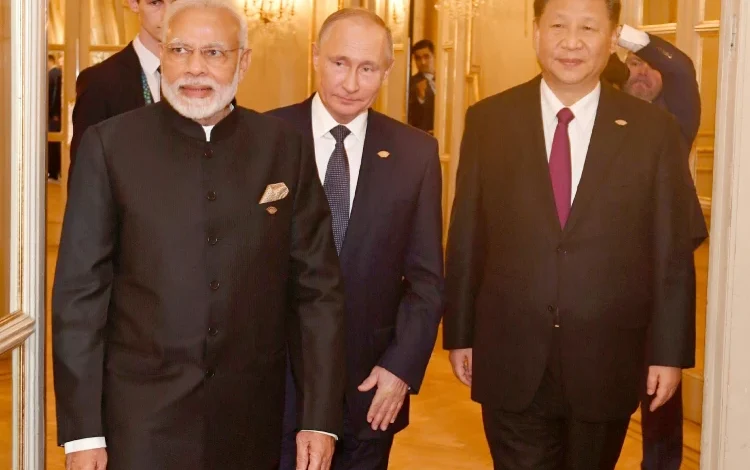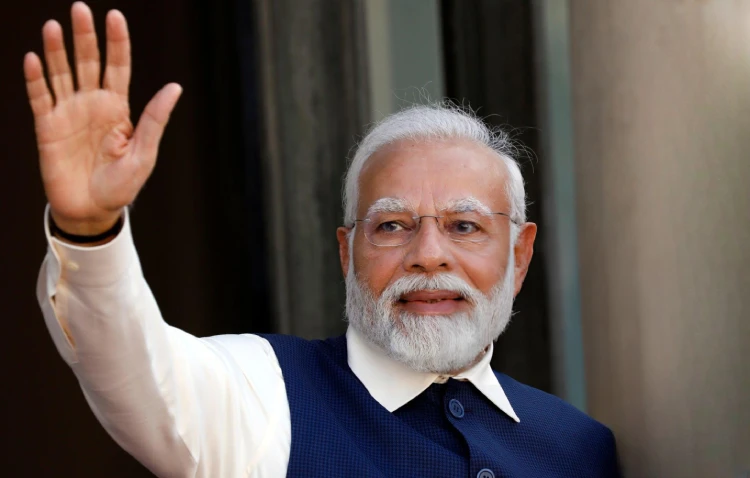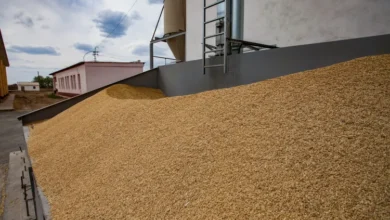
India and China Seek Business Reset After U.S. Tariffs
Modi’s China Visit Focuses on Trade Revival and Cooperation as U.S. Tariffs Disrupt Indian Exports
India and China are taking steps toward a business reset as Prime Minister Narendra Modi visited China during the Shanghai Cooperation Organisation (SCO) summit. The visit comes at a time when President Donald Trump has imposed 50 percent tariffs on Indian exports, including diamonds and prawns, citing India’s continued imports of Russian oil. The tariffs are expected to hit India’s export sector and growth outlook, prompting Delhi to explore new partnerships.
Chinese President Xi Jinping is also facing economic pressure, as high U.S. tariffs threaten Beijing’s manufacturing-led growth model.
In this context, both leaders emphasized that India and China must see each other as partners rather than competitors, with trade and dialogue serving as the path to rebuilding trust.
Direct flights and trade talks on the table

A key outcome of the meeting was the agreement to restart direct flights between the two countries, suspended since 2020. Both sides also discussed easing visa restrictions, allowing religious pilgrimages, and facilitating business travel.
Trade remained a central focus. China contributes its manufacturing strength, India adds expertise in services, and Russia provides vital energy resources. China signaled its willingness to ease some export restrictions, which could benefit India’s electronics and renewable energy industries.
Indian officials also indicated that New Delhi may reconsider restrictions on foreign direct investment (FDI) from China, which were tightened after border clashes in 2020. A review of these rules could open the door for more Chinese capital in sectors such as electronics, renewables, and automotive supply chains.
U.S. tariffs push India toward China
Analysts say Trump’s tariffs have accelerated India’s shift toward exploring closer ties with China. For years, India had aligned more closely with the United States to balance Chinese influence in Asia. But trade tensions with Washington have complicated that strategy.
While speaking in China, Modi underlined that India’s ties should not be judged in relation to any other nation, indicating Delhi’s push for greater strategic independence. Xi Jinping echoed this view, calling for cooperation that strengthens Asia’s role in global trade and supply chains.
Longstanding disputes remain
Despite the progress, deep challenges remain. Unresolved border disputes remain between the two nations, notably the lingering impact of the 2020 clashes in the Galwan Valley. Modi called for a “peaceful environment” along the frontier, while Xi urged that border issues should not define the entire relationship.
Other disputes include Tibet, water-sharing concerns over China’s dam projects on the Brahmaputra River, and Beijing’s close partnership with Pakistan. India’s relations with its South Asian neighbors remain tense, while China continues to deepen economic ties with Pakistan, Sri Lanka, and Bangladesh.
Steps toward cooperation
Experts say practical cooperation could deliver early results. India continues to depend on China for components and raw materials, especially in electronics manufacturing. Reducing import duties and improving supply chain access would benefit both countries.
Faster visa approvals and business travel are seen as low-hanging fruit. China, facing a shrinking U.S. market and already saturated Southeast Asian demand, would also benefit from greater access to India’s 1.45 billion consumers.
Technology and resource cooperation are also under discussion. China contributes its manufacturing strength, India adds expertise in services, and Russia provides vital energy resources. Together, the three could build more resilient supply chains and reduce dependence on U.S. markets.
[Sources]




